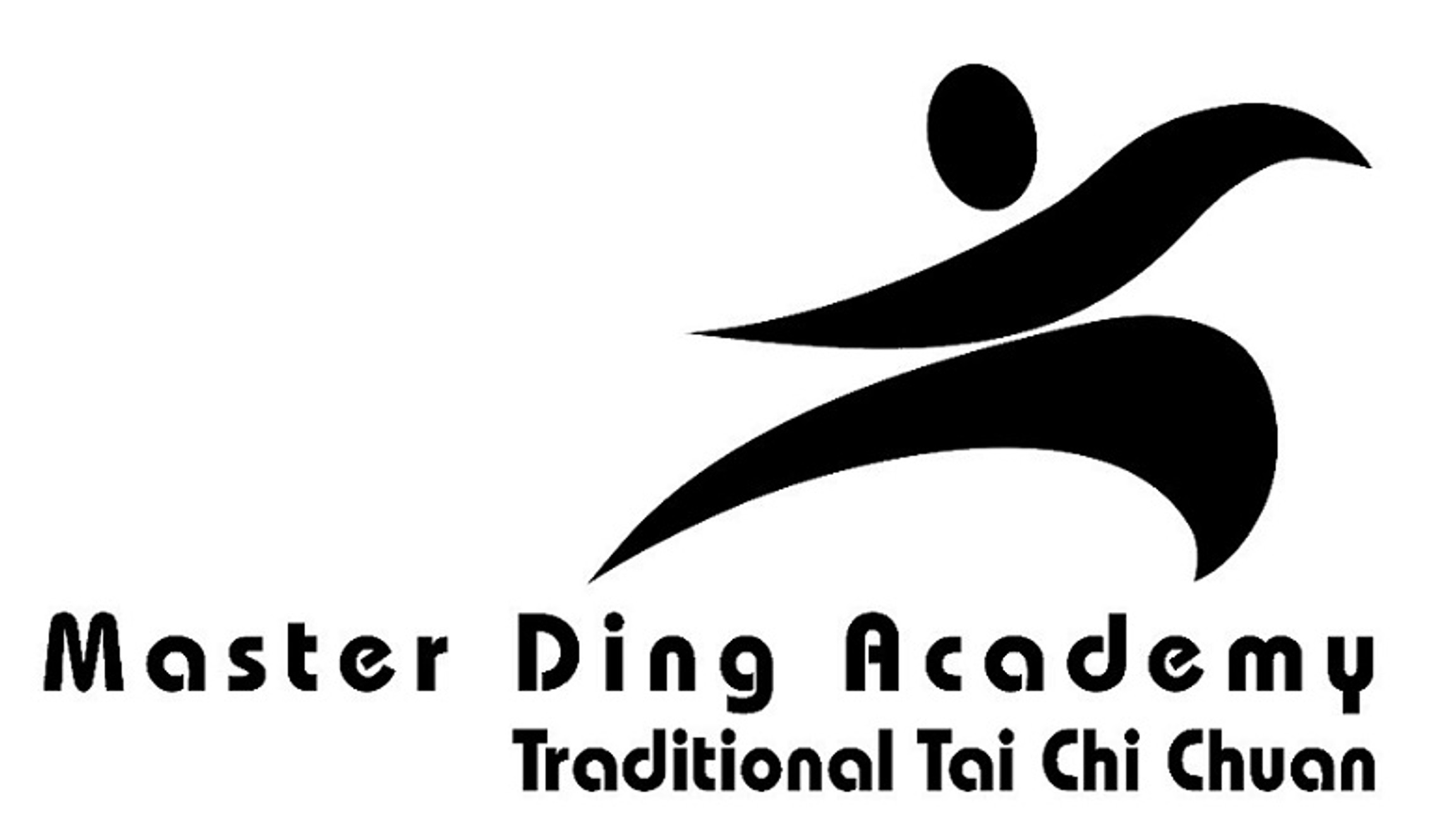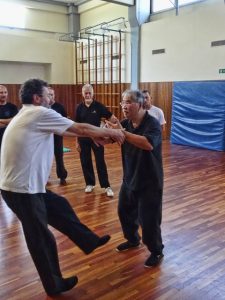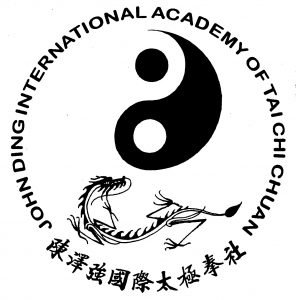TAI CHI LESSONS AND PRACTICE
Every lesson consists of three parts: Chi Kung, Taoist Exercises, and Form Practice.
This standing exercise, which uses eight positions, trains the body, the mind, and aids in centralising the internal energy, as the practitioner learns to let go and relax whilst maintaining dynamic balance. Although the practitioner appears to be seemingly motionless, by practising Chi Kung properly he or she will embody the ancient saying from the Tai Chi Classics “still as a mountain, and dynamic as a raging river”. Regular practice revitalises the body, similar to placing a smartphone on a wireless charger to recharge its battery.
TAOIST EXERCISES
A contracted muscle is a “shortened” muscle that needs to be stretched in order to release tension. These preparatory movements guide the life energy, loosen, and stretch the muscles and releases the tension in the joints through mobilisation. Regular practice of these exercises is able to dissolve muscle memory of past physical and emotional trauma, whilst generating a deep state of relaxation and psychophysical well-being.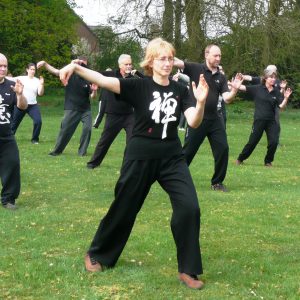
Forms are meaningless without the application of Tai Chi principles, which make it possible for vital energy or “Chi” to circulate freely in the body. The Master Ding Academy is distinguished by its emphasis on applying principles to practice over merely teaching movements. Therefore, practice of Master Ding’s Short Form in the lessons adheres to Master Yang Cheng Fu’s 10 principles of Tai Chi Chuan, and their study by putting them into action and testing them to verify their correctness.
Practising the form benefits the entire body, softens, and nourishes the deep fascia and the skin, calms the nervous system, relaxes the muscles, opens the joints, and relieves physical and emotional tensions. It also promotes blood and lymphatic circulation, reducing fatigue and strengthening our vitality.
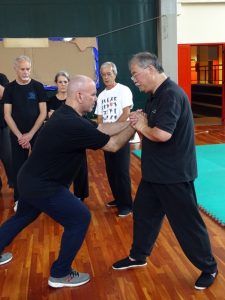
Aside from the John Ding Tai Chi Form, we also practise:
-
-
-
- The Old Yang Style 108-movement long form
- Yang Sword
- Yang Broadsword
- Ip Tai Tak’s Cheung Kuen Se Ying (Long Fist Snake Form)
- Posture tests
- Self-defence applications
- Pushing Hands
- Contact training with a partner
-
-

![]()
c\0 Istituto Pio X Artigianelli
Via dei Serragli, 104
50124 Firenze FI
